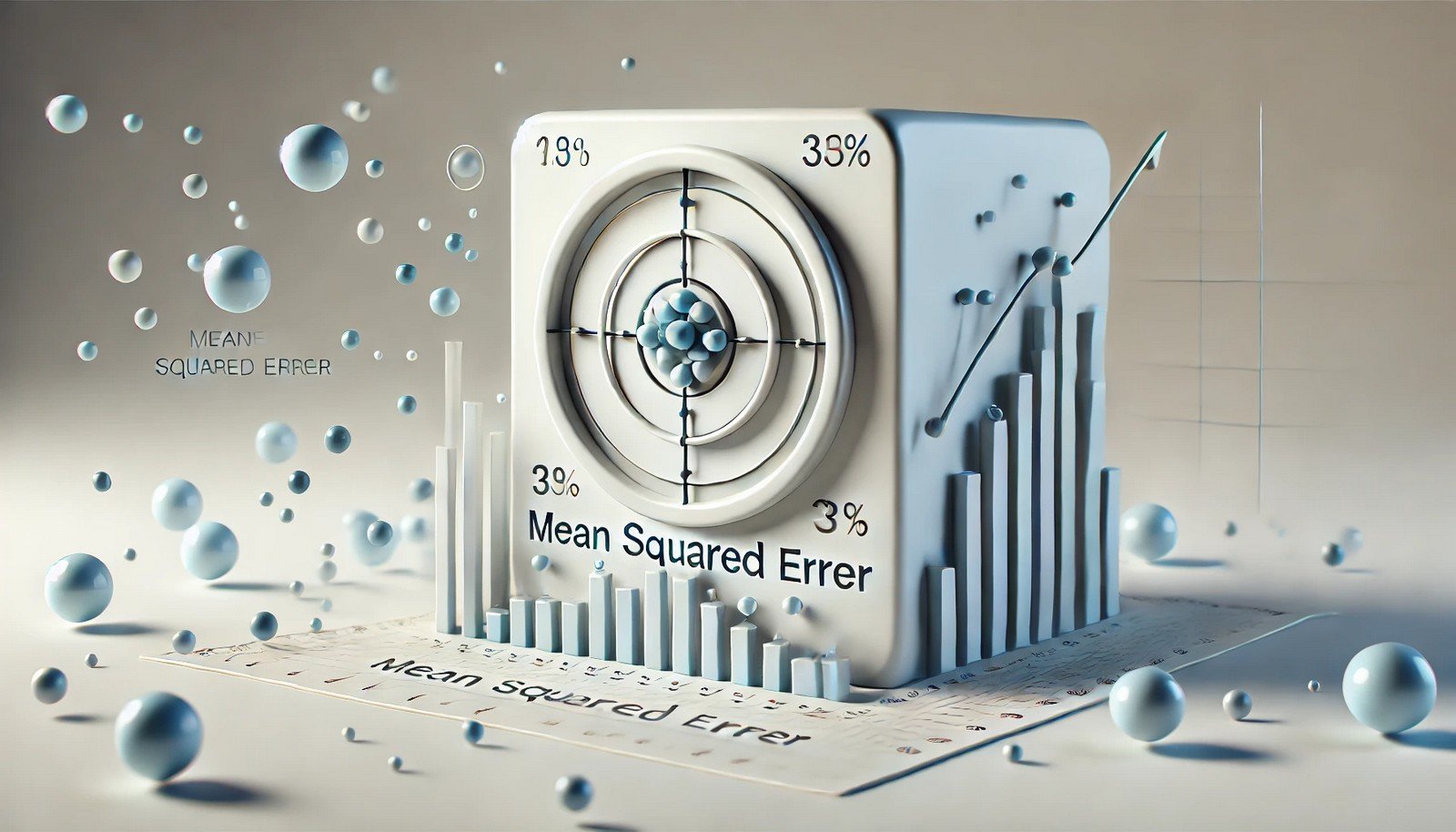Mean Squared Error

Quick Navigation:
- Mean Squared Error Definition
- Mean Squared Error Explained Easy
- Mean Squared Error Origin
- Mean Squared Error Etymology
- Mean Squared Error Usage Trends
- Mean Squared Error Usage
- Mean Squared Error Examples in Context
- Mean Squared Error FAQ
- Mean Squared Error Related Words
Mean Squared Error Definition
Mean Squared Error (MSE) is a statistical measure that quantifies the average squared difference between predicted and observed values. In machine learning, MSE serves as an error metric, commonly used to evaluate regression models by assessing the model's ability to predict continuous outcomes accurately. A smaller MSE value indicates closer predictions to actual outcomes, reflecting higher model accuracy.
Mean Squared Error Explained Easy
Imagine you’re throwing a ball at a target. Each throw lands at different distances from the bullseye. MSE is like measuring the average squared distance between where the ball lands and the bullseye. The closer the throws, the smaller the MSE, showing better aim. In AI, MSE helps in understanding how far off predictions are from actual results.
Mean Squared Error Origin
The concept of Mean Squared Error originates from mathematical statistics, where it was developed as a method to evaluate errors in predictions and estimations. It became widely used with the advent of statistical modeling in the early 20th century.
Mean Squared Error Etymology
Derived from statistical terminology, the term highlights "mean" as the average of the squared "errors," indicating its purpose as a measure of prediction inaccuracy.
Mean Squared Error Usage Trends
With the rise of machine learning and data science, MSE has become a popular metric for evaluating model performance. In regression analysis and predictive modeling, MSE is favored for its simplicity and effectiveness in quantifying prediction errors, especially when assessing model accuracy across diverse datasets.
Mean Squared Error Usage
- Formal/Technical Tagging:
- Machine Learning
- Data Science
- Error Metrics
- Regression Analysis - Typical Collocations:
- "minimize MSE"
- "model evaluation metric"
- "MSE in regression"
- "reduce mean squared error"
Mean Squared Error Examples in Context
- MSE is often used to evaluate the performance of machine learning models in predicting housing prices.
- In weather forecasting, models use MSE to compare predicted temperatures with actual measurements.
- Finance models calculate MSE to assess the accuracy of stock price predictions.
Mean Squared Error FAQ
- What is Mean Squared Error?
MSE is a metric for measuring the average squared differences between predictions and actual values. - How is MSE calculated?
MSE is calculated by averaging the squares of the differences between predicted and observed values. - What does a high MSE indicate?
A high MSE indicates large discrepancies between predictions and actual values, showing low accuracy. - Why use MSE in regression?
MSE is commonly used in regression because it effectively measures prediction accuracy for continuous data. - What is the difference between MSE and RMSE?
RMSE is the square root of MSE, providing error values in the same units as the predicted values. - When is MSE used in machine learning?
MSE is used in evaluating models that predict numerical outcomes, especially in regression tasks. - Can MSE be negative?
No, MSE is always non-negative since it involves squared differences. - Why square the errors in MSE?
Squaring errors penalizes larger discrepancies, giving more weight to significant prediction errors. - What’s a good MSE value?
A lower MSE value generally indicates better model accuracy, but acceptable levels depend on the specific context. - How to reduce MSE in models?
MSE can be reduced by optimizing the model, improving data quality, and refining model features.
Mean Squared Error Related Words
- Categories/Topics:
- Error Metrics
- Machine Learning
- Statistics
- Model Evaluation
Did you know?
Mean Squared Error is widely used in AI to optimize algorithms, including those behind self-driving cars. For instance, MSE helps autonomous vehicles reduce navigation errors by improving the accuracy of object detection models.
PicDictionary.com is an online dictionary in pictures. If you have questions or suggestions, please reach out to us on WhatsApp or Twitter.Authors | Arjun Vishnu | @ArjunAndVishnu

I am Vishnu. I like AI, Linux, Single Board Computers, and Cloud Computing. I create the web & video content, and I also write for popular websites.
My younger brother, Arjun handles image & video editing. Together, we run a YouTube Channel that's focused on reviewing gadgets and explaining technology.



Comments powered by CComment